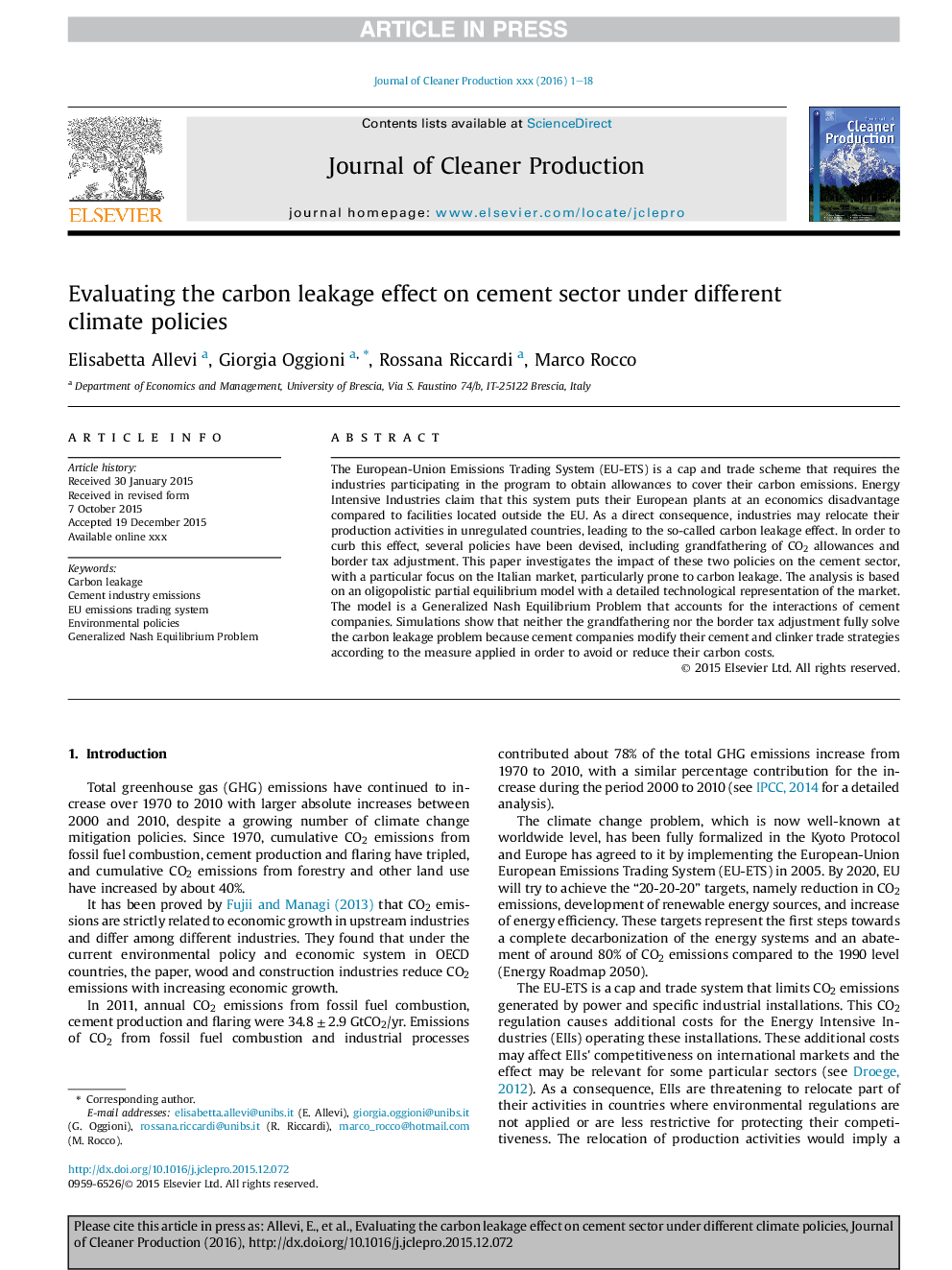ترجمه فارسی عنوان مقاله
ارزیابی اثر نشت کربن روی بخش سیمان تحت سیاست های مختلف آب و هوایی
عنوان انگلیسی
Evaluating the carbon leakage effect on cement sector under different climate policies
| کد مقاله | سال انتشار | تعداد صفحات مقاله انگلیسی |
|---|---|---|
| 144672 | 2017 | 18 صفحه PDF |
منبع

Publisher : Elsevier - Science Direct (الزویر - ساینس دایرکت)
Journal : Journal of Cleaner Production, Volume 163, 1 October 2017, Pages 320-337
ترجمه کلمات کلیدی
نشت کربن، انتشار سیمان صنعت، اتحادیه اروپا تجارت سیستم، سیاست های زیست محیطی، مسئله تعادل عمومی نشانه،
کلمات کلیدی انگلیسی
Carbon leakage; Cement industry emissions; EU emissions trading system; Environmental policies; Generalized Nash Equilibrium Problem;

